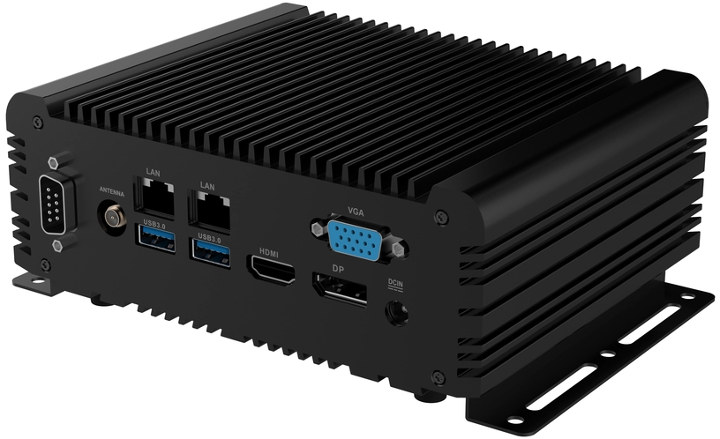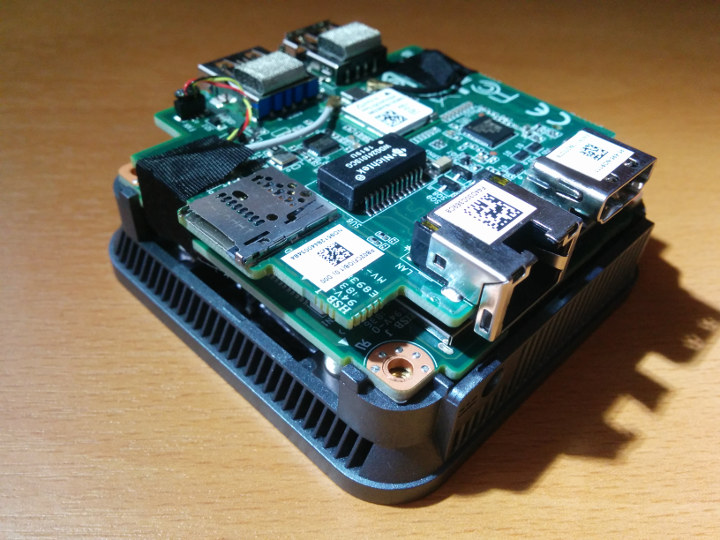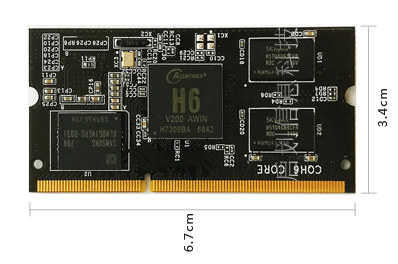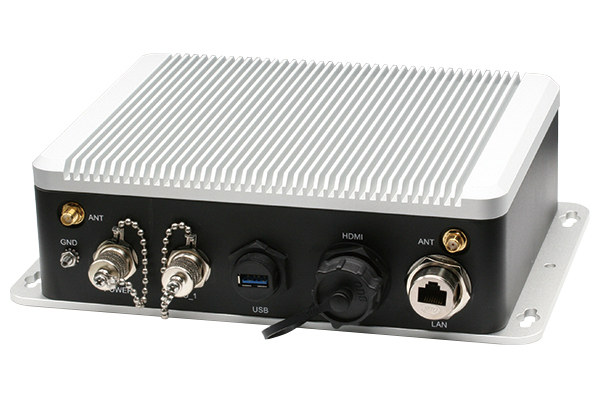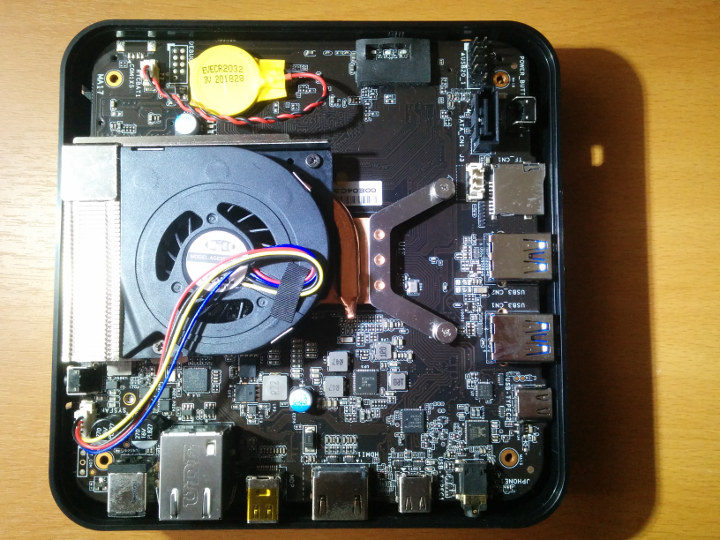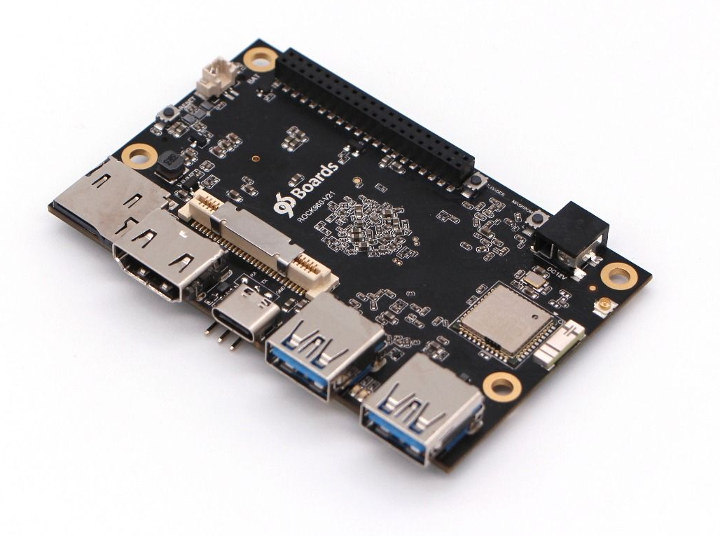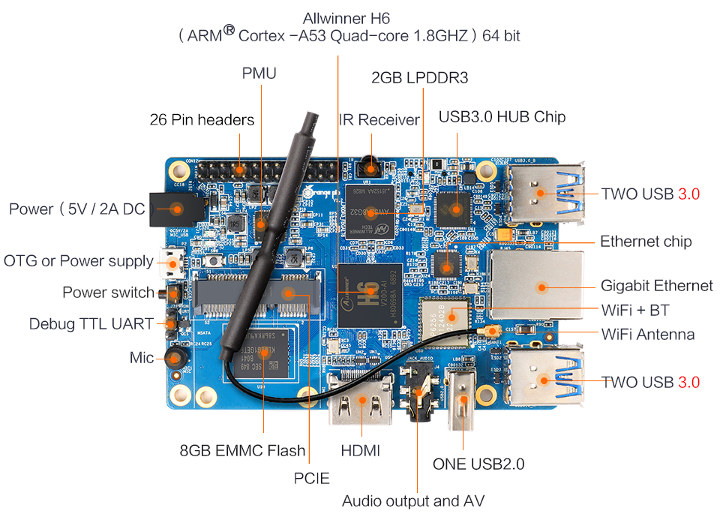ZOTAC is known for their ZBOX consumer and business mini PCs, but they are now entering the embedded computing market with the launch of ZBOX PRO line-up based on their commercial offering but with more robust designs for medical equipment, industrial robots, casino game systems, IoT gateways, ATMs, and more. The company launched 5 models features various Intel processors from Celeron to Core-i7, but I’ll focus on the three passively cooled low power models in this post. ZBOX Pro CI329 nano Specifications mostly follow the ones of ZBOX CI329 Nano model with differences highlighted in bold or stricken-through: SoC – Intel Celeron N4100 quad-core processor (1.1GHz up to 2.4GHz, 4MB cache) with Intel UHD Graphics 600 System Memory – 2x DDR4-2400MHz dual-channel SO-DIMM slots, up to 8GB Storage 1x 2.5″ SATA 6.0 Gb/s HDD/SSD bay 1x M.2 2242/2260 key-M socket for SSD SD/SDHC/SDXC card reader Video Output 1x HDMI 2.0, […]
LIVA Q2 Review – ECS Micro PC Tested with Windows 10 and Ubuntu 18.10
ECS (Elitegroup Computer Systems) is a Taiwanese company that has been offering mini PCs for several years now. Last year they announced their ‘pocket-sized’ model the LIVA Q. Originally featuring Apollo Lake SoCs it has now been upgraded and renamed as the LIVA Q2 and offers a choice of Gemini Lake SoCs. The distinguishing feature of the LIVA Q series however is the form-factor. Compared with Intel Compute ‘stick’ PCs and Intel NUC ‘mini’ PCs the LIVA Q2 is a ‘micro’ PC. This micro PC is like a minimalist mini PC that includes just the minimum number of useful ports namely a couple of USB ports (3.1 and 2.0) on one side, a micro SD card slot on another and finally an HDMI (2.0) and gigabit Ethernet at the rear. The resultant micro PC is beautifully small consisting of a 70mm (2.76″) square case by 33.4mm (1.31”) tall which can […]
Qihua CQH6 SoM – A Better Alternative to Raspberry Pi Compute Model 3+?
The Raspberry Pi Foundation just launched the Raspberry Pi Compute Module 3+ for $25 and up with Broadcom BCM2837B0 processor offering better thermals than BCM2837 processor. As is often the case, this post generated some insightful comments from the smart readers of CNX Software, and they pointed out some of the shortcomings of the module such as the lack of Ethernet support that would be required for cluster use cases for example. You can also add a USB to Ethernet chip to the carrier board, but that’s not ideal, and instead someone linked to Qihua CQH6 system-on-module powered by Allwinner H6 processor and sold for 158 RMB ($23.5 USD) or 199 RMB ($29.65) for respectively 512MB RAM/4GB flash and 1GB RAM/8GB flash configurations. Qihua CQH6 module specifications: SoC – Allwinner H6 quad-core Cortex A53 processor @ 1.8 GHz with Arm Mali-T720MP GPU System Memory – 512MB, 1GB or 2GB DDR3L […]
Kodi 18 “Leia” Released Ahead of FOSDEM 2019
As one should have expected based on the abstract of the upcoming Kodi presentation at FOSDEM 2019, Kodi 18 “Leia” has just been released a few days before the 2-day open source developer event. It’s been nearly two years since the release of Kodi 17 “Krypton”, and it took a little longer than initially expected for Kodi 18 to become stable enough for an official since there have been so many changes including half a million lines of code added by 36 open source developers, close to 10,000 commits for almost 9,000 changed files. Some of the improvements in Kodi 18 include: Retroplayer gaming with support for gaming emulators, ROMs and game controls. Digital Rights Management (DRM) decryption support to play subscription content Improved Music Library with better filtering, faster API access, and more Live TV improvements including support for new back-ends like Zattoo, Teleboy, and Sledovanitv.cz, as well as enhanced […]
AAEON AIOT-IP6801IP68 IoT Gateway Handles Rough Environments
There are plenty of IoT gateways to play with, but if your gateway needs to operate in rough environments, like outdoors or on a boat, you’d need to find one that is water and dust proof event for your environment. AAEON AIOT-IP6801 IoT gateway should meet most people requirements with IP68 ingress protection rating, an Intel Apollo Lake processor, up to 4GB memory, 32GB eMMC flash, built-in support for Ethernet, WiFi 802.11ac and Bluetooth 4.0, as well as optional support for LoRa, 3G/4G LTE, and IQRF connectivity. AAEON AIOT-IP6801 IP68 IoT gateway specifications: SoC (one or the other) Intel Atom E3940 quad-core processor clocked at 1.6 GHz / 1.8 GHz (Turbo) with a 12 EU Intel HD Graphics 500; 9.5W TDP Intel Celeron N3350 dual-core processor clocked at 1.1 GHz / 2.4 GHz (Turbo) with a 12 EU Intel HD Graphics 500; 6W TDP Memory – 2GB or 4GB LPDDR4 […]
Pepper Jobs GLK-UC2X Mini PC Review with Windows 10 and Ubuntu 18.10
Pepper Jobs is a new company led by Ken Wong who was formerly MINIX’s product director and defined many innovative products such as NEO-X series Android media hubs and NEO-Z series Intel-based mini PCs. The first Pepper Jobs designed and released mini PC is the GLK-UC2X targeting small business, 4K home theater, and living room use with an emphasis on low power and great savings on electricity bills. The GLK-UC2X contains an Intel Celeron N4100 Processor Gemini Lake SOC which is a quad-core processor bursting up to 2.40 GHz together with the Intel UHD Graphics 600 processor that is capable of 4K support at 60Hz. It physically consists of an approximately 139mm (5.5″) square case about 33mm (1.3”) tall with a side panel that includes the power button, a couple of USB ports, a Type C USB port and a micro SD card slot with the rest of the ports […]
Cost-Optimized Rock960 Model C Board Sells for $69 and Up
96Boards compliant Rock960 board launched last year for $99 with Rockchip RK3399 processor, 2 to 4GB RAM, 16 to 32GB eMMC flash for $99 and up. However, now you can buy a Rockchip RK3399 SBC for as low as $45 plus shipping thanks to FriendlyElec NanoPi NEO4 board that comes with 1GB RAM and no built-in storage, relying instead on a micro SD card slot or eMMC socket. So VAMRS decided to design a cheaper version of their board with Rock960 model C that still benefits from being part of the 96boards ecosystem, is equipped with 1, 2 or 4GB LPDDR4 RAM, and the OS can boot from a micro SD card or an optional eMMC flash module. The 1GB version of the board is now sold for $69 on Seeed Studio with shipping scheduled for the 1st of February 2019. Rock960 model C preliminary specifications: SoC – Rochchip RK3399 […]
Orange Pi 3 Allwinner H6 SBC Comes with GbE, USB 3.0, mPCIe
When Shenzhen Xunlong Software launched their first Allwinner H6 development board, Orange Pi One Plus, many were disappointed as the board did not make use of some of the key features of H6 processor like USB 3.0 or PCIe, and RAM was limited to 1GB. A couple of weeks later, the company introduced Orange Pi Lite2 board with 802.11ac WiFi, a USB 3.0 port, HDMI 2.0a output, but no Gigabit Ethernet, nor PCIe interface, and again only 1 GB LPDDR3 memory. The good news is we now get a full-featured Allwinner H6 SBC thanks to Orange Pi 3 equipped with up to 2GB RAM, an optional 8GB eMMC flash, Gigabit Ethernet, 802.11ac WiFi 5, four USB 3.0 ports, HDMI 2.0a, a mPCIe slot, and more. There are four variants of the Orange Pi 3 board with either 1 or 2 GB RAM, with or without eMMC flash that share the […]


